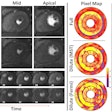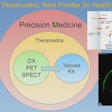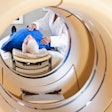PET developer Naviscan said that its positron emission mammography (PEM) technology will be discussed in several scientific sessions and categorical courses devoted to molecular imaging at the 2012 RSNA meeting.
On Sunday morning, November 25, Dr. Kirti Kulharni, of the University of Chicago, will present a pilot study that showed 98% specificity for PEM in determining whether breast cancer has spread to nearby axillary lymph nodes. Based on the results, the researchers concluded that patients with axilla abnormal on PEM could bypass sentinel lymph node procedures and surgeons could assume they have lymph node metastasis, Naviscan said.
A session led by Dr. Wendie Berg, PhD, of the University of Pittsburgh School of Medicine, on Sunday afternoon will summarize the currently approved uses of PEM. They include local staging, the response of breast cancers to primary chemotherapy, and recurrence monitoring, Naviscan said. She will also discuss areas for future research in high-resolution radionuclide breast imaging.
In an interactive session also on Sunday afternoon, Dr. Amy Lynn Conners, from the Mayo Clinic in Rochester, MN, will consider the clinical strengths and weaknesses of PEM compared to breast MRI and breast-specific gamma imaging for screening and diagnosis.




















